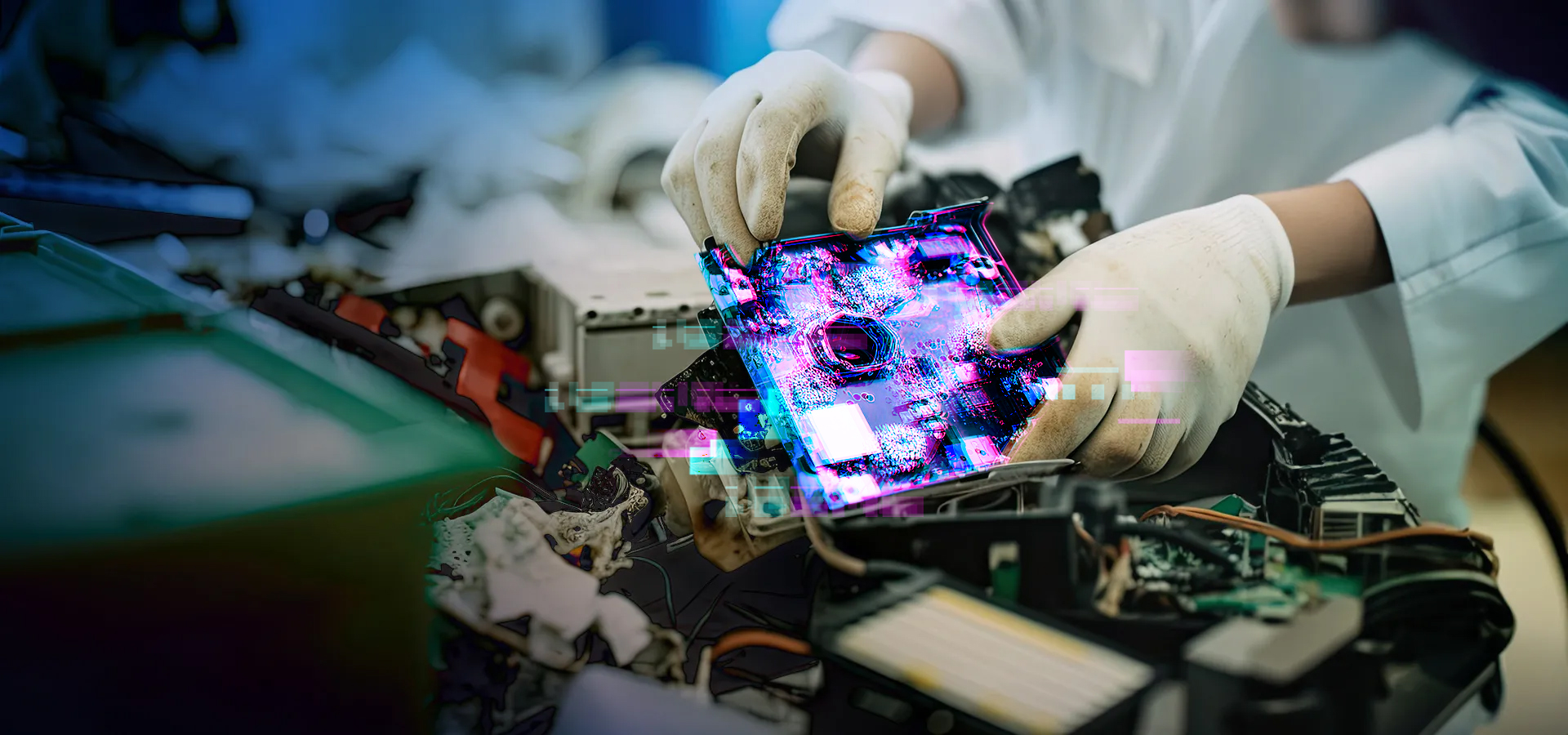
#05: How Would E-Waste Work Within a Circular Economy?
Get expert insights on how businesses can achieve a circular economy and sustainability through the refurbishment of electronic goods.
#05: How Would E-Waste Work Within a Circular Economy?
Tune in as our experts explore the implementation of circular economy principles in business models, focusing on tackling the growing e-waste problem by restoring and repairing electronic devices. Uncover the hurdles in gaining customer confidence within the refurbished market and hear from Camille Richard, Chief Sustainability Officer at Back Market, on promoting the environmental benefits of choosing renewed electronics. Discover more
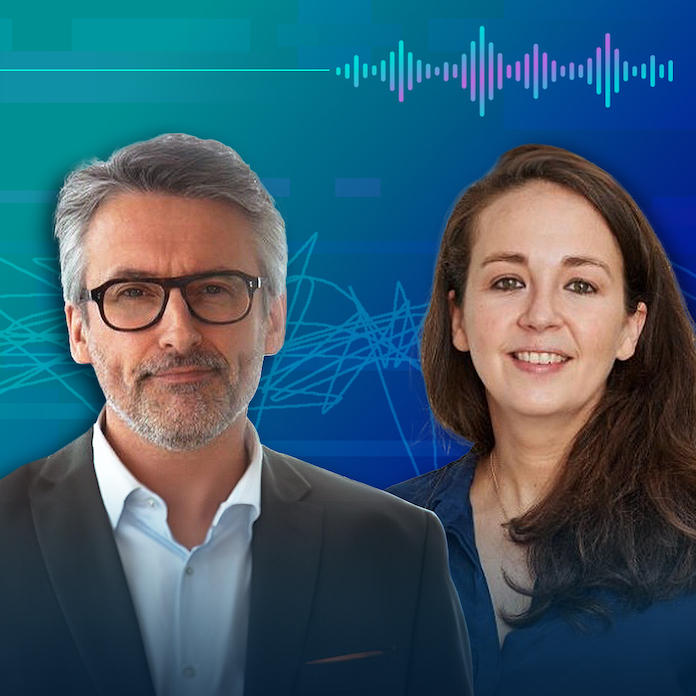
Meet our speakers
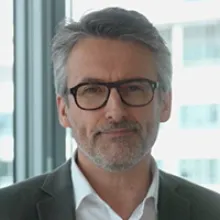
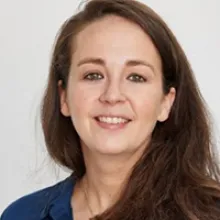
The impact of technology on the planet is very concerning. Today, around 4% of the global carbon emissions are due to digitalization, and 75% of those emissions are due to the manufacturing of digital devices.”
Camille Richard
Read the transcript
Narrator: Welcome to Disruptors Unleashed, where we highlight the disruptive technologies shaping our world. In our previous episode, we followed the inspiring story of trailblazer Easton LaChappelle, as he transformed his bedroom project into an enterprise dedicated to crafting the world’s most lightweight and affordable prosthetic limbs.
In this episode, Jonathan Dutton from Dassault Systèmes and Camille Richard from online e-commerce platform Back Market explore the refurbishment industry, and how it’s challenging the norms and conventions of product design and manufacturing.
Jonathan: Hello and welcome to this session where we will explore how companies integrate circular economy practices into their business models. How can we reduce the amount of waste while making renewed devices attractive, especially in the high-tech industry? The real challenge is building customer trust.
I'm Jonathan Dutton, Sustainability Marketing Director at Dassault Systèmes. And my guest today is Camille Richard, Chief Sustainability Officer at Back Market. She will provide insights on the refurbishment of electronic goods and its environmental impact.
Camille: Hello, thank you for the invitation. I'm Camille and I'm in charge of sustainability at Back Market. Back Market is the first e-commerce platform dedicated to refurbished devices and appliances. Our role is to put in the relationship between refurbishers and end customers. And we are also supporting our refurbishers — to help them improve the quality of their devices and the services they are bringing to customers.
My role in Back Market on one hand is to work on the impact of Back Market as a company. And it's very important for us to reduce this impact because your activity has an impact on the planet as you are based on a circular model. So, it’s so important to control your own impact. And my second mission is actually to raise awareness around the impact of the technology. Back Market has been a mission-driven company since the beginning of the year. This means that our mission today is to support circularity in the technology industry. And we are trying to do so every day.
Camille: Renewed and refurbished are actually the same thing. Refurbished or renewed means that you have done reparation or cleaning of a used device before putting it back on the market. So, it's different, renewed and refurbished are not new devices. They are devices that have been used before and cleaned or repaired and put back on the market.
Camille: Back Market is not a refurbisher. We are an intermediary. But we are actually working very closely with our refurbishers to improve the quality of the refurbishment process because it's very important in building trust for the customers. So, we have an R&D program at Back Market. We have an R&D lab based in Bordeaux, where our specialists are working on developing new machines and techniques for refurbishing devices. It’s just like inventing new devices — like when you have a new model of smartphone, computer or tablet that is going out of any constructors. And you know that a year from now, you will have this device coming to the secondhand market. So, when a new device is out, our specialists actually study this device very closely to find the best way to repair it – to be ready when people start to resell this kind of device – to actually bring the best repair services possible.
These are the things we're trying to do for the refurbishers — to close the loop a bit in regards to refurbishment because as we start selling new devices, we realized that a lot of people are also looking to sell their old devices. So, we have put in place a buyback system that helps the refurbishers find supply, which is a big question for the refurbished market today. You have more demand and offer. So, it's very important to find new supplies and sources of new devices. So, we have put this buyback system in place. And what's interesting about the buyback system is that 99% of the devices that are sold through Back Market by refurbishers are bought in the same country.
So, we are actually helping to close the loop on a local level regarding supply for the refurbishers. So, this kind of thing is something we are trying to do for the refurbishers. Despite the fact that we are not refurbishers, we are trying to help our refurbishers improve the refurbishment process and all this is to support building the trust of the customers. We will have a change of habits regarding the construction of the refurbished versus new only if we are able to deliver the right quality and experience comparable to new products when selling refurbished devices
Camille: The first problem that we are trying to resolve in that market is the trust of the customers toward reused or refurbished devices. Because it seems very normal for everybody to buy a refurbished or secondhand car, but people are quite worried about electronic devices.
So, our job at Back Market is to build trust through many solutions that we propose but this lack of trust could come from many obstacles that we can find in the technical or technological industry. You have the program obsolescence or the marketing obsolescence. In both situations, the constructors actually put barriers to the market of renewed or refurbished devices because people are very worried that their devices are not going to be usable after a while because the software is not going to be adaptable. And also, we have this really particular habit of being attracted by new technologies and innovation. And the constructors are playing a lot on this, making us feel that our phone, which you actually bought a year ago, is too old, too slow and not showing enough performance.
And we have to change our relationship with our devices to be able to actually switch to a secondhand market for electronic devices. And I will say there is another problem that is starting to be solved little by little, by the public authority and the regulators, which is the availability of spare parts. First, the repairers and refurbishers need spare parts to be available for a long time to be able to repair the devices for a longer period.
And you have also the affordability of the spare part. Today, the price of the spare part is a big obstacle for repairers or the repair shops, because sometimes constructors actually put a very high price on battery, for instance. So, the repairers don't have the possibility to buy them and keep an interesting margin for themselves. So, with the help of public authority, we need to make the constructors improve the availability and affordability of spare parts to be able to support refurbishing in the high-tech industry.
Camille: For refurbishers and repairers – because in that point, the repair world and the refurbished world have the same fight – the key is to have good quality spare parts. And today, it is very complicated for repair shops to use native spare parts to repair an Apple smartphone or a Samsung smartphone. Because as I was saying, there is this question of price, first, but I'm going to catch up a bit. For example, a constructor will buy a battery for five euros but it will sell the battery to a refurbisher for 50 euros. So, the price of the native battery won't be interesting, either for the refurbisher or the customer because the price of the refurbished device will be much higher. And we all know that one of the big advantages of the secondhand market is the price.
So, if you have too high of a price for one of the secondhand devices, then people won’t go for a refurbished one. I remember that if the repair cost is higher than 30% of the price of a new device, it won't even be interesting to do the repair from the cost angle, of course. So, it's really important to ease the access to these spare parts, first by putting a fair price on it. Second, by working on the eco-consumption of devices because it's very important to make those devices easier to repair and to make more types of spare parts available.
So, when we talk about the democratization of spare parts, it is to ease the availability — to actually help improve the quality of repair. And this is a huge fight. Yes, we are supporting the repair shops and refurbishers. We are part of an organization called Right to Repair in Europe to actually defend this case with the European authority and the national authorities, to make them understand that we have a very solid and proven solution to fight climate change and reduce the impact of technology on the environment. And we need support to do so and achieve this goal. This involves going through a lot of regulatory changes.
Camille: The impact of technology on the planet is very concerning and very impactful actually. Today, you have around 4% of the global carbon emissions that are due to digitalization, and 75% of those emissions are due to the manufacturing of digital devices. Actually, the idea of Back Market was born from two observations. This observation is based on the impact of technology on the environment, which is very important, and I will get a bit into the details after that.
And the idea that there is a solution that has existed for a very long time, which is actually secondhand, repair and circularity. Back in the 60s or 50s, we used to repair our devices and our machines very easily. At Back Market, we look a lot at the secondhand car market. I mentioned earlier that 70% of the people who buy cars today are buying secondhand cars. And actually, the logic of this market was born in the 60s, when it was really normal to repair devices.
So, we wanted to bring this logic back into the market and apply it to technology devices, which was a bit difficult. This has a very significant impact on global warming and on the impact of technology because if you take the difference between manufacturing and refurbishing a smartphone, you have almost 80 kilograms of CO2. When you manufacture a new smartphone, you actually emit 86 to 87 kilograms of CO2. But refurbishing a smartphone, like changing the battery and the screen, emits around six or seven kilograms of CO2. So, the difference is huge. If you multiply this impact by the number of smartphones that are sold every year, the impact is actually huge.
Since our creation in 2013, we have contributed to avoid more than half a million tons of CO2. So, it's actually significant. And it means that the circular economy applied to the technology world is actually a huge contribution to the fight against climate change. And we are just talking about carbon right now. But when you look at the impact of technology, you have to also talk about water because manufacturing a new smartphone uses more than 80,000 liters of water, and refurbishing a new one involves around 14,000 liters of water. So, the difference is huge as well. You have also the raw materials. I’m picking the example of a smartphone a lot because we have data on it since the beginning of the year and we have more data on those devices this year.
But a smartphone is what we have proof — that it actually has a huge impact. But you know, our smartphones are made of rare precious metals, plastics and aluminum. All those materials have to be extracted and the extraction process has a very dramatic impact on the planet, ecosystem and biodiversity. So, what we are trying to do at Back Market is actually to convince the customers that they can have their own impact and their own contribution to the planet by changing their consumption habits and going towards secondhand devices. But this logic can go as well for clothes, for instance, or furniture. We want to start a change of habits or revolution in habits toward the secondhand market. But in order to do so, we have a lot of work to do.
Camille: Actually, Back Market has to manage regulatory questions regarding e-waste and traceability. But something that is very important to understand is that we are an intermediary. Back Market, like what I mentioned in the beginning, is an e-commerce platform. So, we help build relationships between customers and refurbishers. But we are not a refurbisher. We don't have any kind of stock, we don't have a warehouse and we are not in charge of delivery either. We actually help and support the refurbishers to improve their own activities, offering them services to find steps to do quality checks or we help them to develop new methods of repair. But we are not mainly responsible for the devices. That being said, we have a responsibility for our supply chain. And we want to have this responsibility because it's important to be aware of what actually is going on in your supply chain.
So, this kind of regulation regarding e-waste, for instance, is actually very different from one country to another. In France, for instance, there is a new law regarding circular economy that asks us to make sure that all the sellers on the platform in France are actually disposing and recycling their e-waste in the proper way. So, we are working on that. What makes it a bit difficult is that the refurbishing market is very heterogeneous — you don't have just big companies or very small shops. You actually have big factories with 1,000 to 2,000 employees and you are a very small workshop with 4 to 8 people, so that makes it a bit complicated, but it's something that we are managing to do.
And according to the country, we don't have the same kind of obligation, but what we are trying to do, above all, is to be ready for the change of regulations and anticipate any kind of regulation in any country regarding the environment, mostly. So, we are working with our refurbisher to help them to be more responsible regarding e-waste. We are also putting quality standards in place to make sure that we are going to be in line with every regulation in any country and we are always a bit above the national standard regarding quality.
Jonathan: That’s great. So, we've understood that only in a few years, Back Market has grown from a startup to a French unicorn with more than 1,500 suppliers around the world. That's a great success story.
Camille: There is a lot of lack of trust from the customers regarding refurbished devices compared to new ones. At Back Market, our internal motto is ‘There is no factual reason to buy new’. So, what we are trying to do is to give the trust to the customers by giving them the same experience they would have upon buying new devices.
What we mean by bringing the customers the same experience is through plenty of device choices, nice ads, after-sales services and warranties, to name a few. So, this is our work at Back Market to recreate the condition of trust and good experience for the customers. So, the first thing you have to do is to make sure that the quality will be here. As I was saying, refurbishing is actually repairing or cleaning devices that have been used before. And you have to make sure that these repairs and cleaning are done at the best quality so the device will have a longer life possible in its second lifespan.
This is why we have put a very high-demanding quality process in place for the sellers who are selling on the Back Market. First, they have to pass a lot of questionnaires and audits regarding their own production and quality processes. Then, we let them enter the platform and grant them a few weeks of sales, where we watch all the KPIs regarding defective rates and response time to customers, for instance. And we put them through a few weeks, where they have a limited amount of savings they can accumulate. And we are watching all the KPIs regarding defective rates, for instance. If they pass this period, they can go ahead and sell on the platform as usual. But we will still be monitoring all those KPIs all the time when they’re selling on Back Market and we are doing it for all of our sellers. We will warn the sellers if we see that the defective rate, for instance, is at a low rating, and we will talk to the sellers to try to find solutions to improve this quality.
The idea is actually to support our sellers by boosting their quality and promoting growth. And it's something that we are doing every day through daily reports on their dashboards with all the KPIs when we are monitoring for them. So, on one side, they can improve the quality but also improve their sales strategy. For instance, in the past month, this kind of computer has been the top-selling item on the platform. So, the sellers can decide to put more of those computers on the marketplace, for instance. So, we are helping them both on the business side and quality side. This is the part where we are trying to help with our sellers’ quality and reliability on the platform.
On the other side of the chain, I would say, is the customers. We have to convince the customers that it's actually a good thing to buy refurbished devices. And this goes not by making them feel guilty for buying new things, but by giving them information. So, we have a mission of awareness regarding the impact of technology and the benefits of refurbished devices on the planet. This is what we are trying to do every day, giving all kinds of information and data for every customer to choose from. And we are also investing quite a lot in marketing and advertising because, of course, we are a company that actually sells products.
But on top of that, what we are trying to do is to change the mindset regarding new technology versus refurbished. And we are trying to play on the field of constructors regarding marketing — we are not going to say names but there are huge technology constructors that are very good in marketing and advertising, and making people want to buy their devices. And we are trying to play on this kind of field by having a tone of voice regarding marketing, trying to make our customers understand that secondhand technology is actually cool and sexy. And you don't have to buy new all the time — you have to make a responsible choice. And it's kind of cool to be a part of something when you choose to go circular. And we are trying to make the new industry a little bit known through a marketing message and an advertising message.
Camille: Most of our customers come to Back Market because of the price. But 25% of today's customers are coming for impact in Europe. That is also something that is very interesting to look at – the maturity and the sensitivity about impact or price are actually different from one country to another. But what I was going to say, which is interesting, is that when we started in 2014, only 3% of our customers were coming for impact. Today, it’s 25%. So, this share is growing. And we want it to grow. Of course, because it means that we will be selling more and also because we are actually trying to change our habits regarding technology, so it's very important for us that the share is growing.
And what’s something that is very important for me to say – which is actually something that our CEO repeats a lot to the team every week – is that we are not here to create more consumption or create more demand. We are here to gain shares in the new market. There's something that is very important to emphasize. That being said, as you have said, we have two kinds of customers. We have those who are coming for impact, and these customers actually tend to spend more on the platform than the shares of the customers who are coming for the prices. Of course, you don't address these two kinds of customers the same way. But what we are trying to do is once you have customers that are coming for the price, we are trying to give them more information about the impact. This is to make them understand that even if they don’t come for a better impact on the planet or reduce the footprint, they have done so by choosing refurbished. That's why it's so important to have good quality devices, good after-sales services and to have guarantees, because you need your customers to come back. So, it's all part of a whole meaning — we have all these parts regarding impact, quality and marketing. And we don't really need to convince the people that are coming for impact, that they are doing the right thing. What we can do is give them more information. For instance, I was mentioning the study that has been published this year regarding the impact of refurbishment, so we are giving them this info. And we are helping to reassure them that they’re making a good choice.
But regarding the customers that are coming for the prices, we are giving them more information about the impact. We are not doing anything different in the marketing efforts for these two categories of customers. Now we have the proof of the benefits of refurbishment versus new, we are all about impact. And we are very convinced that that will be the future of our customers — that more customers will come to Bank Market to have a good impact.
Jonathan: That's great. Well, thank you very much for your answers, Camille. What we've done here is we've really unpacked the refurbishment of electronic goods, the industry challenges and how businesses can balance sustainability and profitability. And with that, we've reached the end of our interview. To Camille, thank you for your valuable insights and to our audience, thank you for tuning in.
Narrator: Disruptors Unleashed is produced by Dassault Systèmes. For more episodes, follow us on Apple Podcasts, Spotify, Deezer, or your nearest streaming platforms. To learn more about Dassault Systèmes, visit us at 3ds.com.
Learn more
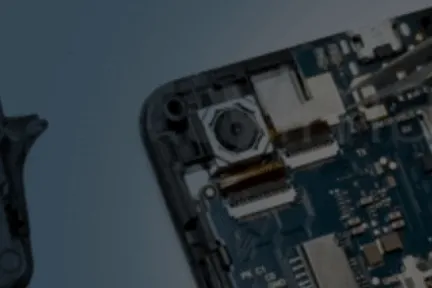
Durable products and parts last for life. Discover how to extend the product lifecycle with data analytics and transition from a linear to a circular economy.
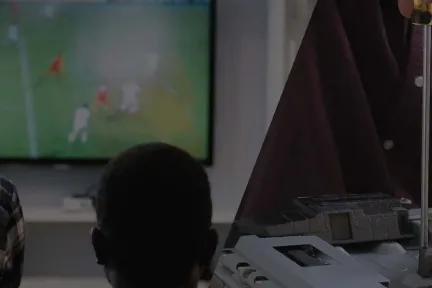
Digitalization keeps waste-reduced products in the loop and unlocks long-term revenue streams in the transition towards the circular economy.
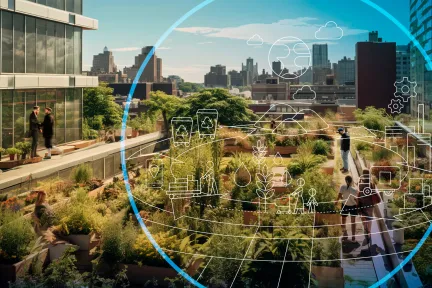
The circular economy is gaining significant traction as a sustainable approach to resource management. By adopting principles such as reducing, reusing, and recycling, organizations and consumers alike can minimize waste, maximize resource utilization, and contribute to the restoration of natural ecosystems.
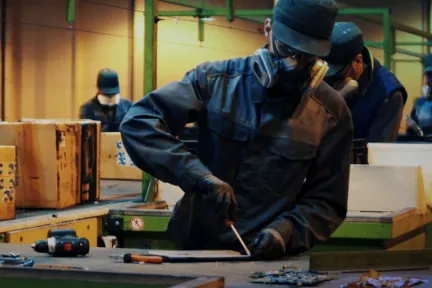
Design for disassembly, a practice embraced by product developers, plays a crucial role in fostering a circular economy. By dismantling and repurposing original components, whether within the same product or an entirely new one, substantial environmental advantages can be achieved.

It’s time for concerted action. Here’s how to make the circular economy achievable, scalable and profitable.
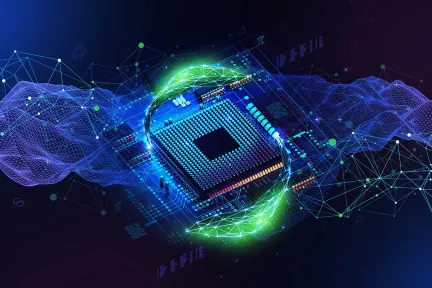
Discover how high-tech manufacturers can sharpen their sustainability strategy to go beyond e-waste recycling and achieve regulatory compliance, zero-waste operations and efficient product recovery



